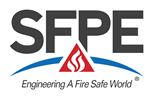FEMTC 2011
Underground Parking Garages – Changing perceptions on smoke control criteria and combining an Integrated HVAC System for Smoke control and Ventilation 
Donna Netanel - S. Netanel Engineers and Consulting Ltd. and OffStream Studios
Abstract
Underground parking garages are either fully or partially closed. While only some of the partially closed garages are required by standard and regulations to install an electro-mechanical smoke control system, fully enclosed garages that exceed one underground level are always required to install such systems. Smoke Control and Ventilation (SCV) system designers, along side fire protection engineers, are facing three major challenges: The first maintaining Air Quality levels according to health and environmental regulations by means of toxic gas extraction (Co, Co2, Nox). The second by providing a Smoke Control system for emergency fire situations, which in many cases are held to building Tenability standards, among them smoke layer height, which is rarely achievable in low ceiling clearance facilities. And last by designing an integrated all-in-one solution for both demands. While Israeli Health and Environmental Standards and Regulations define at least 8 Air changes per hour, using an extraction of 20% from lower layers (floor level) and 80% from Higher Layers (ceiling level) alongside a PPM threshold, Fire and rescue authorities and Buildings construction regulations require only 6 Air changes per hour (adopting American NFPA Standard), and must effectively extract smoke from upper ceiling level. Under these integrated requirements, system designers tend to almost automatically design a system that is based on Vents, Jet Fans and Air ducts, resulting in a complex cost-ineffective system that is high on installation costs, energy consumption and is rarely esthetic to the eye. This paper will present a case study portraying a change in perception regarding smoke control demand criteria for underground parking garages - "Smoke control by smoke zones" utilizing an optional criteria as proof of sufficient ventilation – "Airflow Threshold" for the mater of CO evacuation. Both new perceptions are approved and acceptable by local authorities in Israel while maintaining a realistic and economic viable solution.
Presentation
Resources
| Paper | Presentation | ||
|---|---|---|---|
| HTML | HTML | ||
| Resources Archive File (.zip) | |||

